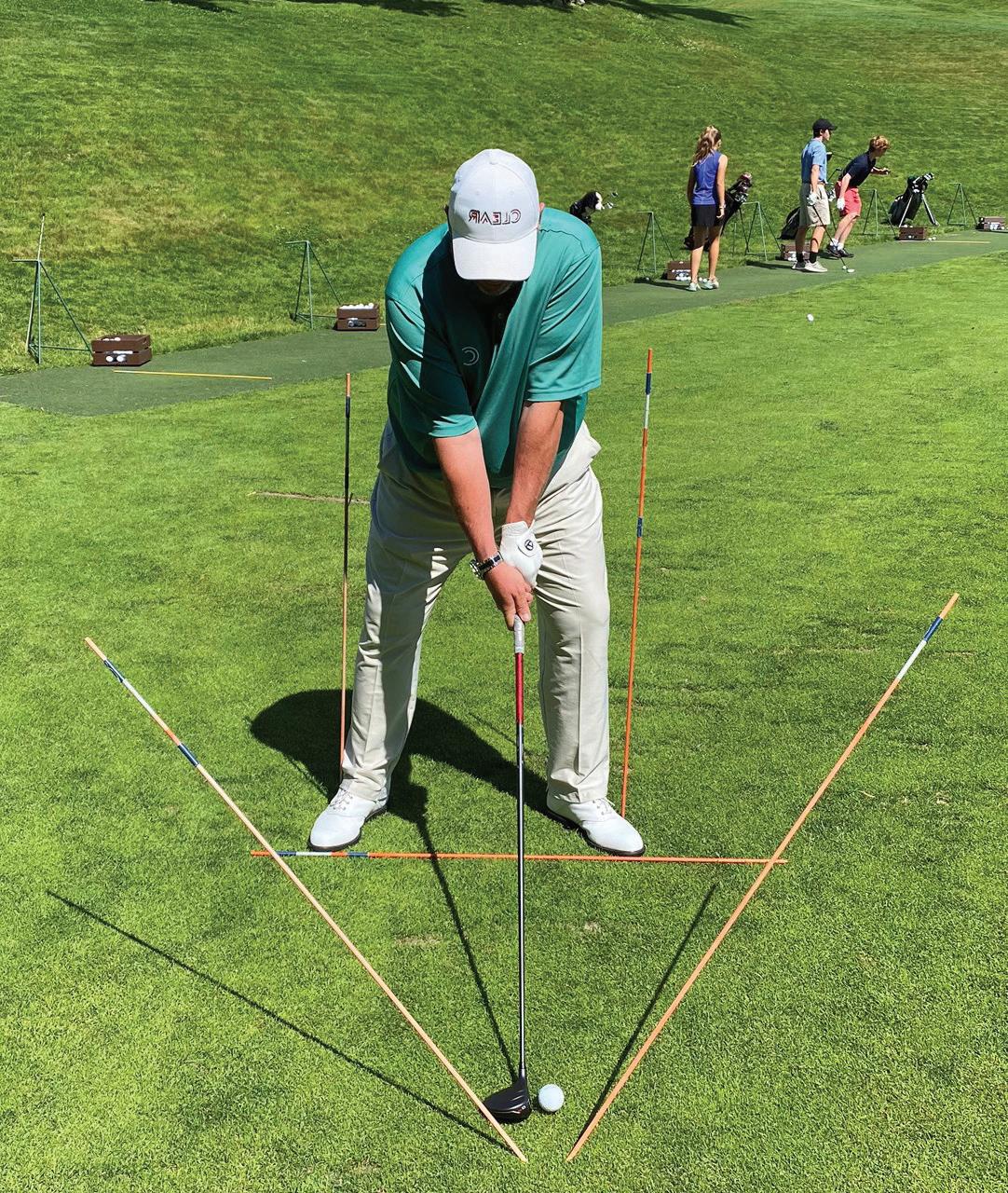
3 minute read
Five Sticks to Better Strikes
An award-winning public golf course with all the amenities of a private club
• 36 picturesque holes • Practice greens, driving range, carts and club rentals
• Friendly, highly-trained PGA Staff • Customized planning for corporate groups, tournaments and special events
“Top Ten in the U.S.”
-Golf Digest
“Brian Silva, Architect of the Year.”
-Golf World Magazine
...Now with Tee Times Available Online!
1000 Freeman’s Way Brewster, MA 02631 Toll-Free: 877-843-9081
www.captainsgolfcourse.com

www.GolfingMagazineOnline.com 25
By Gene Mulak
What was once solely utilized to prevent a snowplow from destroying a mailbox during the winter can now be found in almost every PGA Tour player’s bag.
What I will refer to as an “alignment rod” can be purchased for very little money at any hardware store. These rods can be very useful when working on your game. I have pictured five alignment rods that when set up in place, can work several parts of the swing that if executed properly will produce shots that are hit higher, fly straighter and will find the sweet spot on your clubface on a more regular basis. As you can see, the five alignment rods are all on or stuck in the ground. Each rod serves a specific purpose.
The first rod is located on the ground, along my toe line. This is a commonly used tool to help players with their alignment. The rod is used by almost every player on the PGA Tour. The rod should be aligned parallel to your target. This will aid in making your swing not shift during the strike of the golf ball.
The second and third rods are forming a letter “V”. These are put into the ground on an angle which will help form an arc for the golfer to swing on. The most efficient golf swings form a concentric circle, with very little shifting to the swing plane. Moving the club around on the backswing, like a football player kicking a field goal, then returning the club back to the ball where the club will be moving slightly in-to-out and not in jeopardy of looping or “coming over the top” in the downstroke. As the club moves into the forward swing, most players that would hook and push the ball will hit out excessively, causing these results depending upon the clubface. The front side of the “V” will ensure that this does not happen, and the club will swing around the corner and form an arc.
The fourth and fifth rods serve what may be the most important part of a great swing. The rod that would be put next to the golfer’s trail foot will ensure the golfer is turning his or her hips going back and not sliding. If the golfer slides his or her hips back, he or she will move the club low behind the ball. This will cause contact issues! This is probably the most common fault among amateur golfers. The center of the pelvis should not move back. If the golfer bumps the alignment rod in the backswing, this will provide instant feedback.
The fifth rod will serve as the opposite of the fourth rod at the back side of the swing. On the down swing, not only does a good swing have a hip turn but it will have a hip slide. The idea of moving the hips linear is very foreign to most golfers. If a player only produces a rotary action, they will never get all their weight to the front side of the swing. A golfers’ goal should be to bump his or her lead hip into the alignment rod that is in the ground on the front side of their swing. Again, this simple alignment rod will produce instant feedback for the golfer.

Gene Mulak is the Director of Golf at Silver Spring Country Club in Ridgefield, CT . Gene is a certified Stack & Tilt instructor. He can be reached at (774) 406-1549 or Golf@SilverSpringCountryCC.org










